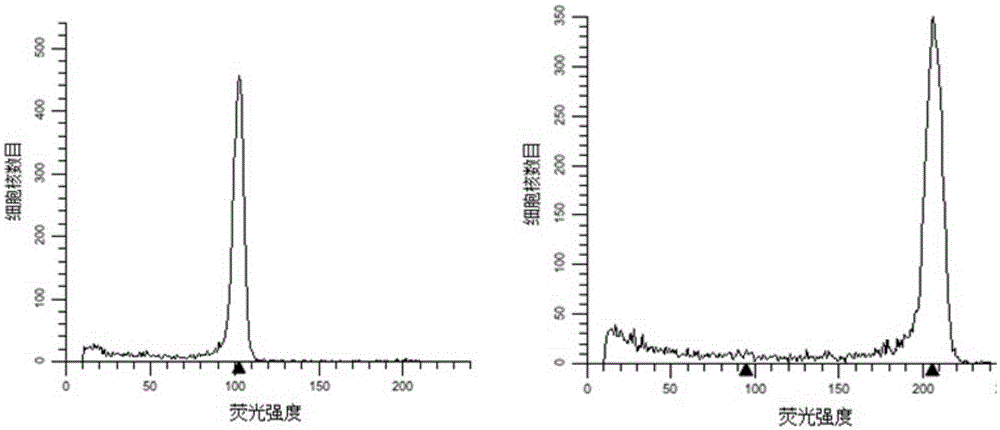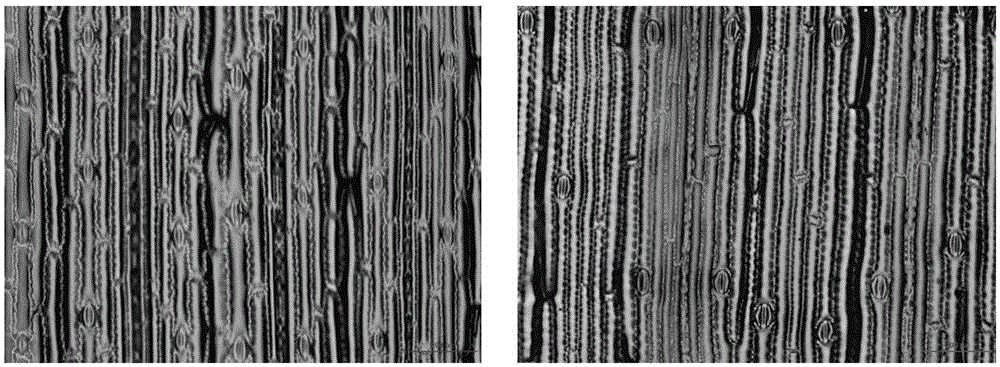Method for cultivating octoploid lowland type switchgrass
An octoploid and willow branch technology, applied in the field of plant breeding, can solve the problems of limited germplasm resources and single planting varieties, and achieve the effects of fewer chimera plants, mature methods, and stable doubling effects
- Summary
- Abstract
- Description
- Claims
- Application Information
AI Technical Summary
Problems solved by technology
Method used
Image
Examples
Embodiment 1
[0036] Taking the tetraploid lowland switchgrass variety Alamo as the research object, at the booting stage, cut the immature young ears of switchgrass with bracts that grew robustly, stripped the outer bracts and leaf sheaths, and cut the young ears with inner bracts into 1.8 -2.2 cm segments to obtain young ear segments containing inner bracts. On the ultra-clean workbench, first disinfect the surface with 75% ethanol by volume for 30 seconds, rinse with sterile distilled water twice, then sterilize with 20% NaClO by volume for 10 minutes, and finally use sterile distilled water Wash 3-4 times, place on sterilized filter paper, and blot the surface moisture.
[0037] 1): Cut the sterilized young ear section containing the inner bract lengthwise into two halves, and then inoculate it in induction medium (MS basic medium + 3% maltose + 5mg / L2, 4-D + 1.2mg / L6 -BA+0.8% plant gel, pH value 5.8), induce callus tissue under dark conditions at 25±2°C, subculture after 10 days, subc...
Embodiment 2
[0048] Taking the tetraploid lowland switchgrass variety Kanlow as the research object, at the booting stage, cut the immature young ears of switchgrass with bracts growing vigorously, stripped the outer bracts and leaf sheaths, and cut the young ears with inner bracts into 1.8 -2.2 cm segments to obtain young ear segments containing inner bracts. On the ultra-clean workbench, first disinfect the surface with 75% ethanol by volume for 30 seconds, rinse with sterile distilled water twice, then sterilize with 20% NaClO by volume for 10 minutes, and finally use sterile distilled water Wash 3-4 times, place on sterilized filter paper, and blot the surface moisture.
[0049] 1): Cut the sterilized young ear section containing the inner bract lengthwise into two halves, and then inoculate it in induction medium (MS basic medium + 3% maltose + 5mg / L2, 4-D + 1.2mg / L6 -BA+0.8% plant gel, pH value 5.8), induce callus tissue under dark conditions at 25±2°C, subculture after 10 days, sub...
PUM
 Login to View More
Login to View More Abstract
Description
Claims
Application Information
 Login to View More
Login to View More - R&D
- Intellectual Property
- Life Sciences
- Materials
- Tech Scout
- Unparalleled Data Quality
- Higher Quality Content
- 60% Fewer Hallucinations
Browse by: Latest US Patents, China's latest patents, Technical Efficacy Thesaurus, Application Domain, Technology Topic, Popular Technical Reports.
© 2025 PatSnap. All rights reserved.Legal|Privacy policy|Modern Slavery Act Transparency Statement|Sitemap|About US| Contact US: help@patsnap.com



